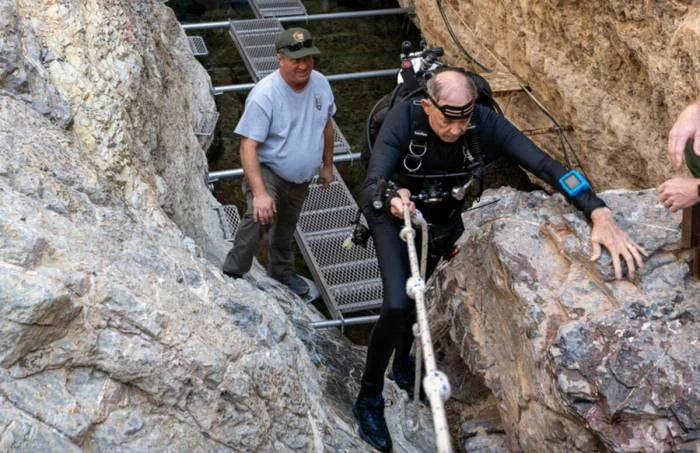
Tiny Devils Hole Pupfish Show Resilience Amidst Earthquakes
The remarkable resilience of the Devils Hole pupfish, the world’s rarest fish, has captured attention once again. Amid the backdrop of recent earthquakes that have impacted their unique habitat, the ongoing efforts of scientists and conservationists highlight the importance of protecting these tiny creatures.
Recently, two significant earthquakes, one in December and another in February, have caused disruptions in the Devils Hole, a semi-submerged cave that serves as the sole home for the pupfish. In their latest semiannual survey, National Park Service scientists reported a troubling count of just 38 pupfish, a stark decline from a previous high of 191 fish last spring. “The present size at near-record lows deserves our serious attention,” emphasizes Michael Schwemm, a biologist with the U.S. Fish and Wildlife Service.
Despite these setbacks, hope shines through with the successful introduction of 19 fish raised in captivity at the Ash Meadows Fish Conservation Facility. This is a landmark achievement for conservationists, as it marks the first time captive-raised pupfish have been reintroduced to their wild habitat. The intricate protection of this species is bolstered by the Endangered Species Act and a historic Supreme Court ruling that curtailed groundwater pumping in the area, aiming to preserve the vital aquatic ecosystem.
Since 1972, dedicated scientists have meticulously conducted semiannual surveys of the pupfish population, diving into the deep waters of Devils Hole to count the precious inhabitants. Although the recent count of 38 represents a decline, it remains above the all-time low of 35 fish documented in 2013. This serves as a bittersweet reminder of the continual struggle to maintain a stable environment for these remarkable fish.
Natural disasters have disrupted vital habitats in the cave, notably moving algae and fish eggs away from crucial spawning and feeding areas. However, the team has been proactive, adjusting their conservation strategies to ensure the fish receive adequate nutrition during the recovery of algal growth.
Brandon Senger, supervising fisheries biologist for the Nevada Department of Wildlife, assures that the reintroduction plan is functioning effectively. “The fish were in good body condition and active throughout Devils Hole,” Senger stated, echoing optimism about the spawning behaviors observed recently. The encouraging resurgence in algal growth suggests a positive trajectory for the pupfish population.
These developments prompt reflection on the fragility of nature and reinforce the significance of effective conservation strategies. As scientists continue to monitor this unique fish, one must ponder the question: How will the balance between natural challenges and human interventions shape the future of the Devils Hole pupfish?
We invite readers to share their thoughts and insights on this fascinating story of resilience and conservation. What are your views on the efforts to protect endangered species like the Devils Hole pupfish?